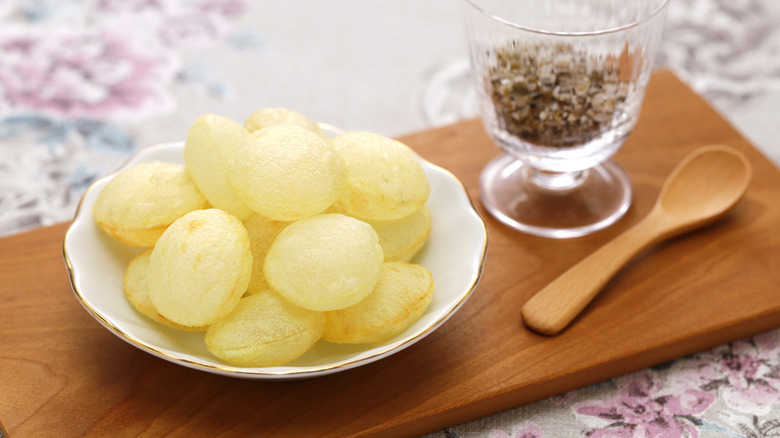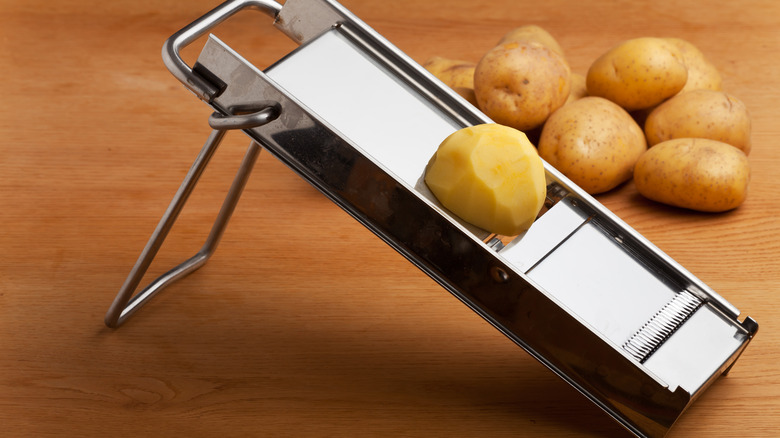Why Pommes Soufflées Is One Of The Trickiest Potato Dishes To Execute
We're not crazy — we could never ask you to name a favorite potato dish. It's like asking someone to choose a favorite child or the pet they adore most. It's an impossible question that will never yield a definite answer. After all, who could really say if French fries or hash browns take the top spot for crispiest and saltiest treat. And, if mashed potatoes were pitted against scalloped potatoes, we bet you would struggle to select a favorite. However, there are some often overlooked dishes in the potato multiverse that we believe deserve a little more recognition.
Pommes soufflées are the pillowy French fry variation you didn't know you needed. The thinly sliced potatoes are made by quickly heating them in oil, which puffs them up to crispy perfection. However, properly executing this dish can be difficult, as it is one of the trickiest potato dishes to pull off. There are many factors that go into the preparation process and the cooking experience. Here's how to do it right.
The pommes soufflées technique
According to Le Cordon Bleu, the first step is picking a potato with a high starch content and low moisture level. Varieties with these qualities can include King Edwards, russets, and sweet potatoes, according to The NEFF Kitchen.
The next thing to do is peel the potato into an oval shape, giving it curved edges and flat sides. This makes the slices an ideal shape for frying and helps gives them uniformity, according to Saveur. A consistent shape is important, so if you aren't confident with a knife, a mandolin is a great alternative — Le Cordon Bleu recommends slices between 3-4 millimeters. Use paper towels to absorb any residual moisture before frying to prevent oil spatter and burning the outside of your potato pieces.
This, as we said, is a delicate operation, so you want to have two separate pots of hot oil — one at 130 Celcius, the other at 180 degrees Celcius, according to Le Cordon Bleu. A handful of potato slices should be added to the 130-degree pot first and mixed around. When they're slightly puffed, they should be removed and patted dry, of oil this time. Then, they should be added back to the hotter pot of oil to finish puffing and further browning. When finished, let them cool and dry on paper towels to absorb any residual oil and top them with sea salt.
While this may be a labor-intensive meal, the final product is definitely worth the effort.

